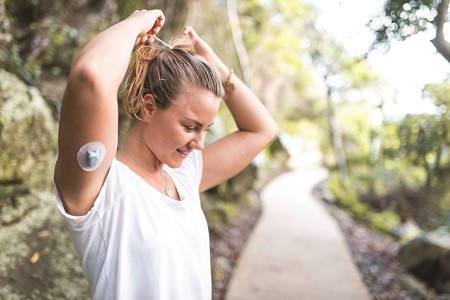The ASEAN Medical Device Innovation Technology Summit 2021 organised by Ringier Events featured a presentation by Kelvin Lim, Field Development Manager at Celanese Singapore Pte Ltd. Mr. Lim gave an overview on the application of liquid crystal polymers (LCP) for medical devices. International Plastics News for Asia highlights his expert insights on the advantages of this material in meeting the demands of today’s medical industry.
What are liquid crystal polymers and what are their attributes?
Mr. Lim: Liquid crystal polymers (LCPs) are highly crystalline, inherently flame-retardant, thermotropic (melt-orienting) thermoplastics. They are similar to semi-crystalline polymers, but have distinctive attributes. When melted, conventional semi-crystalline polymers have a random structure, which, as they cool, form highly ordered crystalline regions surrounded by an amorphous matrix. LCPs take this order to another level.
For high precision, thin-walled parts that may need to survive high-heat exposure, many designers and processors specify LCPs. LCP molecules remain well-ordered even in the melt and slide past each other easily under shear. The result is very low melt viscosity making it easy to fill extremely thin walls and to replicate intricate features. They exhibit little or no shrinkage in the flow direction and require very little time to set up or solidify, (low heat of fusion). Very fast fill rates are typically .1 to .2 seconds and shorter cycle time results in high productivity.

Mr. Kelvin Lim, Field Development Manager at Celanese Singapore Pte Ltd.
Can you share with us an overview on why LCPs are now being applied in the medical sector?
Mr. Lim: LCPs are well known in the consumer electronic industry and now it is increasingly being used in the production of medical devices. These devices keep evolving and continuous improvements are being made to develop smaller, yet more functional devices. Many OEMs now aim to produce medical devices that are smaller and lighter in weight, and these are being met by LCPs which have been the preferred material for micro connectors, high speed connectors for 5G in the electronics/electrical sector. LCP is a special material that can be moulded into small and precise thin-wall components. LCP has the ability to hold extremely tight tolerances and there are specific grades that can fill < .1mm wall sections.
LCP as material solution offers the uniqueness and special properties that make it ideal for the production of medical devices. In my presentation, I shared LCP morphology, flow and resulting physical properties, as well as examples of medical devices that are produced with LCPs. Essentially, designers are looking for new technology and solutions to pack more functions into a compact and lighter devices for patient’s comfort, safety and convenience. LCP polymers are a natural fit for structural elements meeting the requirements of thin-wall designs without sacrificing strength, stiffness, and dimensional control.
What LCP resins from Celanese are meeting the requirements of thin-wall medical devices in terms of safety, function and compliance with set standards?
Mr. Lim: Firstly, let me share an overview of what Celanese LCPs can offer. Celanese has more than 40 years of innovation history in LCP and medical devices. The LCP resins that Celanese produces are unique as being engineering resins, these can be easily processed on conventional equipment and do not need high mould temperatures unlike moulding PPS, or PEEK.
LCP has an excellent dimensional stability with extremely low moisture absorption and very low mould shrinkage. It has inherent properties for clean, low extractable, food contact compliant, and medical biocompatibility. Specifically, Vectra® LCP from Celanese is a family of halogen-free, high-performance polymers that provide high-temperature performance in eco-friendly thin-wall applications with exceptionally precise and stable dimensions.
Vectra® LCP has a service temperature from 130oC up to 240oC with heat deflection temperatures up to 340oC. It has excellent mechanical strength properties and barrier properties to oxygen and moisture. It is sterilisable under steam and has excellent chemical resistance as well. The Vectra® LCP also has very close tolerances possible (to tolerance class T6) and very low heat of fusion to achieve short cycle times. It features high tensile strength up to 200 MPa and tensile modulus of up to 30,000 MPa. Its very low coefficient of thermal expansion makes it comparable with that of steel and ceramics, while being inherently flame-resistant (UL 94 V-0, some grades with 5 VA). It is halogen-free without additives and has very good resistance to chemicals and oxidation.
Our much broader portfolio of Vectra® MT® LCP includes glass-filled, mineral-filled, tribologically modified, high flow, fibre/filler modified and appearance grades. It is suitable for a variety of uses in medical device applications. The Vectra® LCP products comply with FDA and EU requirements. We offer long term supply assurance without change of formulation, certified biocompatibility under the USP 23 Class 6 or ISO 10993, among other regulatory compliance.

Celanese works with OEMS to deliver the right material for medical devices.
For medical devices, Vectra® MT LCP offers superior qualities. Usually, we think the mechanical performance will be inferior when the component has a thinner wall; however, LCP resin is unique in the world of engineering resins. For Vectra® LCP polymers the tensile strength and flex modulus increase as the wall thickness decreases as a result of the unique microstructure and “rocklike” molecular orientation that aligns with a shear flow. In fact, less than 1mm wall thickness sections are the sweet spot for optimum mechanical properties. This is a paradigm shift in thinking.
LCP always exhibits a melting range rather than a sharp melt point. The typical solidification time is a few seconds with injection moulding cycle time range of 5 to 15 seconds for small part moulding, depending on the number of cavities. I also indicated in the presentation the LCP 30% glass fibre filled that showed extremely good flow as compared to other 30% to 40% glass fibre engineering thermoplastics at 3.2 mm.
How does Celanese work with OEMs in delivering the requirements for medical devices? Can you cite an example or special case?
Mr. Lim: Let me share a case study of our OEM customer for the design of a wearable injection pump that allows patients to manage their diabetes with effective low maintenance treatment approach. The designers were searching for a material solution to manage overall device costs, especially as the components are disposable. The specific requirements for a lightweight, cost-efficient wearable device include comfort and excellent mechanical performance including dimensional stability, high stiffness and tight part tolerance. From previous experience, we know that medical device customers are seeking increased production efficiency through higher numbers of mould cavities and shorter cycle times. To address the increasing number and complexity of internal components, miniaturisation of these parts provides design flexibility that creates space for additional functionality.

Vectra® LCP from Celanese provides high-temperature performance in eco-friendly
thin-wall applications, such as for medical devices.
Our field development engineers and product specialists worked with the customer to replace a polycarbonate device chassis with higher performance smaller components using a Celanese medical grade LCP. Vectra® MT LCP 1305 was selected, a 15% glass-reinforced grade with higher flowability that enabled medical device designers to develop a thinner walled, lower weight chassis with accelerated cycle times. This delivered up to 50% per part cost savings versus the incumbent material. The result is greater productivity at reduced production costs. Lastly, the simplified design allowed for increased flexibility for other components and eliminated the plating step due to inherent flame retardancy.
There are also other healthcare applications for Vectra® LCP such as housing and inner parts for hearing aids, compact camera module for some medical equipment like surgical instruments.
In summary, the unique microstructure of LCP enables rapid cycle moulding of smaller, more complex device components. Celanese Vectra® LCP has a long clinical history in registered medical devices and is supported by our Celanese MT® polymer service package. Celanese brings knowledge and capability to customisation of V Vectra® LCP for use in complex medical applications.
Vectra® and MT® are registered trademarks of Celanese. All rights reserved.
Celanese Singapore Pte Ltd.
Tel: +65 68676005
Fax: +65 68675925
E-mail: healthcare@celanese.com
Website: healthcare.celanese.com
- This article also appears in the International Plastics News for Asia - February 2022 issue.














